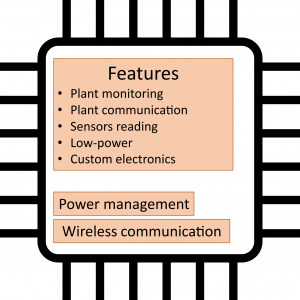Microelectronics Implementation for Smart Agriculture
Microelectronics plays a crucial role in revolutionizing the agricultural sector through the development of smart agriculture systems.  By integrating advanced electronic technologies, such as the design of integrated circuits (ICs), farmers and agricultural professionals can harness the power of data-driven decision-making to optimize crop production and resource management.
By integrating advanced electronic technologies, such as the design of integrated circuits (ICs), farmers and agricultural professionals can harness the power of data-driven decision-making to optimize crop production and resource management.
The design of ICs for smart agriculture involves the creation of miniaturized electronic circuits that can perform specific functions essential for monitoring, controlling, and automating various agricultural processes. These ICs enable the collection and processing of data from sensors, actuators, and other devices, providing valuable insights into environmental conditions, crop health, irrigation, and more.
The key objectives of IC design for smart agriculture include efficiency, reliability, and low power consumption. Miniaturization allows for the integration of multiple functions on a single chip, optimizing space utilization and reducing costs. ICs also enable wireless connectivity, facilitating real-time communication between agricultural devices and centralized systems.
In particular, our research aims to develop an IC that includes our stem impedance sensors and can be adopted to monitor crops directly. Furthermore, the chip will be able to transmit data in the plants towards the idea of creating a Plant Area Network (PAN).
Overall, the design of ICs for smart agriculture represents a powerful tool in the modernization of farming practices. It empowers farmers to maximize productivity, conserve resources, and improve sustainability by leveraging the potential of microelectronics and data-driven technologies. With continuous advancements in IC design, the future of smart agriculture holds promising opportunities for enhanced efficiency and increased yields.
Keywords: Microelectronics, Processor Design, Low-Power Chip, Custom Electronics, Internet of Things.

Barezzi Mattia
Ph.D. Student - AgriFood Electronics



